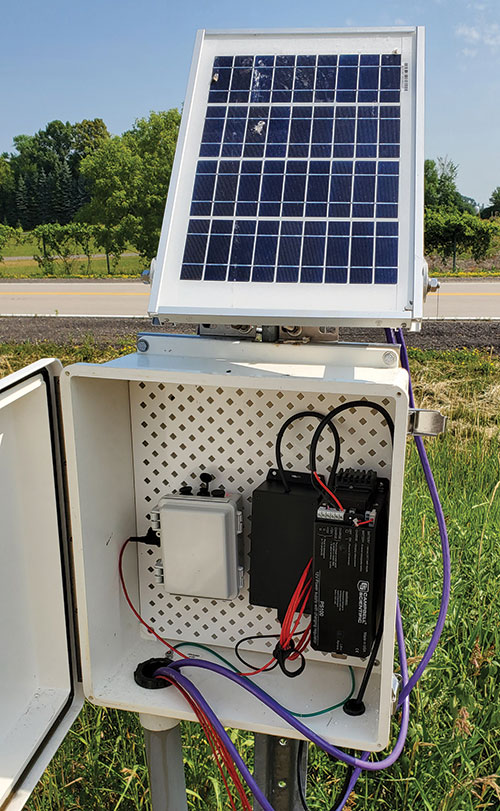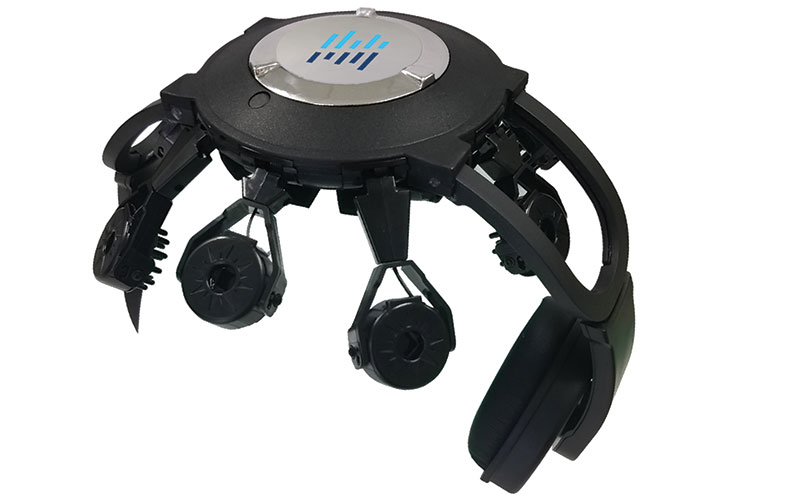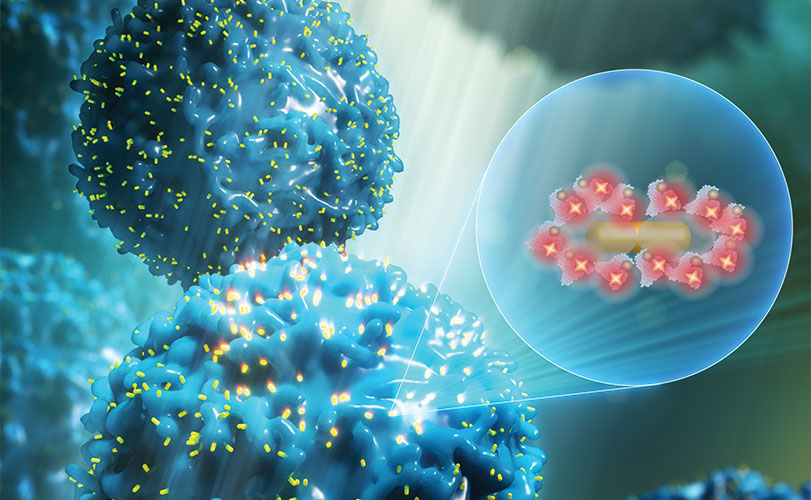Innovation never stops
McKelvey Engineering faculty look to solve problems with their technical expertise
The startup culture in St. Louis has been strong since the early 2000s, particularly at Washington University in St. Louis, where many successful startups began or have an association, including Square, GiftAMeal, Varsity Tutors, Answers.com, Cardialen and Exegy. And it hasn’t slowed down: the venture capital firm M25 recently named St. Louis the fifth-best Midwest city for startups; St. Louis-based Arch Grants awarded 35 new startups with awards; and T-Rex awarded five $100,000 grants through its GeoSeed Grant Program. In 2020, St. Louis venture capital firm BioGenerator funded 22 startups in health care and agriculture.
Worldwide, investors poured nearly $25 billion into artificial intelligence startups, according to Statista, despite the ominous statistic that 90% of startup businesses fail.
Over the past several years, faculty members in the McKelvey School of Engineering at Washington University have made numerous technological advances in their labs based on years of painstaking research.
In fact, the goals in the school’s 2018 strategic plan include increasing the number of faculty actively starting companies and commercializing technology from 10% to 20%, guaranteeing that students have the opportunities for entrepreneurial experience, appointing professors of the practice with entrepreneurial experience, and creating an Entrepreneurs in Residence program within the school. With assistance from the Office of Technology Management, as well as funding from various sources, these advances have been used to launch startup companies that offer solutions to existing problems.
The following highlights only a few of the many startup companies our faculty have founded or cofounded in the past several years.
Infratico
- Shantanu Chakrabartty, professor of electrical & systems engineering and of computer science & engineering
Shantanu Chakrabartty and Kenji Aono, his former master’s and doctoral student and postdoctoral researcher, launched Infratico (Infrastructure Analytics Co.) in 2020 with Nizar Lajnef, associate professor of civil and environmental engineering at Michigan State University. The company builds sensors and systems to monitor infrastructure, such as roads, to gather various types of data, including road conditions and traffic patterns. By embedding the sensors in the pavement, it also can determine structural integrity, such as cracks, before they become visible.

Infratico’s roadside unit for collecting test data.
Photo courtesy of Infratico
“The beauty of these sensors is that they collect these proprietary features that are very unique based on the mechanical properties, such as vibration,” Chakrabartty said. “The sensors take that data and compress it right away and store in the cloud, so we don’t need to send raw data over a wireless network. Then machine learning comes in to interpret and make sense of the data. Using AI techniques, we can make a prediction that something will happen.”
The work stemmed from Aono’s doctoral research at WashU, which he completed in 2018. For the past several years, the team has had its sensors deployed on the 5-mile-long Mackinac Bridge, which connects Michigan's upper and lower peninsulas and is the largest suspension bridge in the western hemisphere. The team first installed sensors in 2016 in work funded by the National Science Foundation (NSF). Five years later, in August 2021, Infratico received Phase I Small Business Innovation Research (SBIR) funding from the NSF to further develop its technology.
“We want to make smarter cities and smarter infrastructure,” said Aono, who works out of a co-working space in Philadelphia. “Everyone’s talking about autonomous vehicles. You can put laser radar cameras on your car to make it super smart, but the infrastructure is still dumb. What we want to do is take built environments, such as roadways, and give them some sense of smartness during Phase I. We're working on finding a way to change the radio communication between autonomous vehicles and the infrastructure.”
In addition to bridges and roads, Chakrabartty said Infratico’s sensors could be used to monitor the structural integrity of buildings, such as the Champlain Towers South Condominium tower in Surfside, Florida, that collapsed in June 2021.
“These sensors can monitor a huge bridge or building, and we want to determine what type of long-term maintenance or critical maintenance you need to do,” Chakrabartty said. “They can last for 20 years before needing to be replaced.”
DeepSight
- Lan Yang, Edwin H. & Florence G.Skinner Professor in the Department of Electrical & Systems Engineering
“We want to help revolutionize the technology for medical imaging,” said Yang, a co-founder and chief technology officer of DeepSight. “There are some emerging physics that we can make use of to better enhance the sensitivity of the current ultrasound system. When you reinvent the physics, then the data will look different, so naturally, we have to redo the software.”
DeepSight’s technology would allow ultrasound to see deeper inside a patient, providing better data for diagnostics in a variety of areas, including general radiology, cardiology, women’s health, oncology and at the point of care in emergency rooms.
“In addition to enhancing the current performance, we can make the current medical diagnosis better by providing better imaging quality but also enhance the capability that would allow us to deal with some difficult cases that cannot be solved by ultrasound and have to be referred to more expensive diagnostic equipment,” she said.
Yang said startup companies are important to the economy because they are able to take the risks needed to grow and develop technology.
“I can see the reasons why there are startups – they are resilient, flexible and can change direction based on market needs,” she said. “Naturally, as a professor, I appreciate doing innovative research. Now
I have a better understanding of engineering. When you address an innovation challenge, that’s engineering.”
Neurolutions
- Eric Leuthardt, MD, professor of neurosurgery at Washington University School of Medicine and of biomedical engineering
- Dan Moran, professor of biomedical engineering
Eric Leuthardt and Dan Moran have developed a first-of-its-kind device to help those disabled by stroke regain control over their arm and hand function by using their minds. The device, the IpsiHand Upper Extremity Rehabilitation System, was developed by their startup, Neurolutions, formed in 2007. It received Breakthrough Designation in May 2020 and market authorization from the Food and Drug Administration in April 2021. The product uses a non-invasive brain-computer interface technology licensed from Washington University. In the fall of 2021, it was awarded Product of the Year for California Life Sciences’ Pantheon Awards, which recognize excellence and celebrate the contributions and achievements of leading life sciences innovators representing therapeutic, diagnostic, medical device and industrial biotechnology companies.
While not yet available to patients, Neurolutions is preparing to bring the device to market. IpsiHand is intended for stroke survivors who have difficulty in moving or controlling an arm and hand. Most patients recover some movement in the first few weeks after a stroke, but improvement generally wanes by six months, leading to stalls in progress.
Patients who have used the device so far have shown meaningful improvement in recovering some movement in their upper extremities when they weren’t expected to see any improvement. The key is the use of a non-invasive, wearable brain-computer interface.
Early St. Louis-based investors included BioGenerator and Ascension Ventures. The company is now led by CEO Leo Petrossian and Fred Khosravi, chairman of the board.

A wireless EEG electrode device worn on the head and used to measure the patient’s brain signals; these signals are analyzed by the system to determine the patient’s intent to move their affected hand, and translates the signals into motor movement of the robotic skeleton, resulting in opening and closing of the impaired hand.
Photo courtesy of Neurolutions
Auragent Bioscience
- Srikanth Singamaneni, professor of mechanical engineering & materials science
Since he joined the Engineering faculty in 2010, Srikanth Singamaneni has been developing novel gold and silver nanoparticles and platforms for biosensing. In 2018, his lab invented an ultrabright fluorescent nanoparticle called the plasmonic fluor, which can be used to create extremely sensitive tests for determining the concentrations of biological markers. These tests have higher performance and are simpler and cost less than what is used in both biomedical research and clinical diagnostics. In 2018, Singamaneni co-founded the company Auragent Bioscience, derived from the Latin words for gold (aurum) and silver (argentum). Auragent licensed the intellectual property rights to bring this technology to market.
Since its launch in 2018, Auragent has not only scaled up the manufacturing process of the plasmonic fluors, but also developed its own fluorescence reader, assay kits and antibodies to offer an entire biodetection platform initially targeted to biomedical researchers.
Auragent has received about $2.5 million in funding through two Phase I and one Phase II Small Business Innovation Research grants from the National Institutes of Health. They plan to have their products available to the commercial market in Summer 2022.
Singamaneni is joined by CEO Shaker Sadasivam, former president and CEO of SunEdison Semiconductor Ltd. and an alumnus of Olin Business School’s executive MBA program; and Scott Crick, who earned a bachelor’s degree and a doctorate in biomedical engineering from WashU Engineering in 2005 and 2011, respectively, and is now director of research and development for Auragent. Several former students and postdoctoral trainees from Singamaneni’s lab are also working there, bringing the total number of employees to about 10.
Singamaneni said that he never expected that his research would take this direction.
“Although I do like a lot of work in the lab, the tech translation from the lab to market is a very, very different ballgame,” he said. “If not for the team, I don’t think I could actually think about how to approach this. I used to think about it very, very differently, and now I know that I was completely naive.”
However, he said it is very rewarding to see his research culminate this way.
“This is the best way to make an impact,” he said. “There is a lot of satisfaction in training students and sending them out, but these technologies coming out of your lab, if they can go into someone else’s lab and answer research questions, is very rewarding.”

Engineers at the McKelvey School of Engineering at Washington University in St. Louis have received federal funding for a rapid COVID-19 test using a newly developed technology called plasmonic-fluor.
Photo courtesy of Srikanth Singamaneni
SentiAR
- Jonathan Silva, the Dennis & Barbara Kessler Career Development Associate Professor of biomedical engineering and computer science & engineering
- Jennifer Silva, MD, professor of pediatrics at Washington University School of Medicine
SentiAR, which developed visualization technologies for surgical applications, was co-founded by Jonathan Silva and Jennifer Silva, a pediatric cardiologist at St. Louis Children’s Hospital. The company’s first product, the CommandEP system, receives imaging data from the electro-anatomic mapping systems and creates a 3D holographic image via its proprietary data flow and visualization algorithms. The patented system presents a 3D image of the patient’s heart showing in real-time the position of the catheters via a wearable headset. The system demonstrated up to 50% improvement in point navigation accuracy in clinical studies.
Jon Silva and his team of engineers created software for the headset that converts the data from the catheters fed into the patient's heart into a geometrical holographic image that hovers over the patient. The headset, which weighs roughly a pound, allows the physician to take control of the procedure by using his or her gaze to guide the controls and to keep hands free and sterile. Their system provides a 3D digital image of the patient's electroanatomic maps that provide a picture of the inside of the heart, which they can measure and manipulate during the procedure. The U.S. Food & Drug Administration cleared the CommandEP system as the first holographic guidance system to be used during invasive cardiac procedures.
In April 2021, SentiAR raised $5.1 million in Series A funding. Its investors include TechWald Holding; BioGenerator, the investment arm of BioSTL; Cultivation Capital; VCapital; Neue Fund; QRM Capital and Keiretsu Forum. It also has funding from the National Institutes of Health and an Arch Grant. The Silvas licensed their technology to SentiAR, which is further developing the augmented reality software. They have been working with the university's Office of Technology Management to bring the technology to market.
OpenCell Technologies
- J. Mark Meacham, assistant professor of mechanical engineering & materials science
Since then, OpenCell Technologies has pivoted to focus on using the device for the emerging gene therapy market and has recently received additional Phase II SBIR funding and venture capital.
“We’ve been around for a long time, but we still call it a startup company, though we have never sold a product,” Meacham said.
Now, Michael Binkley, who was a student in Meacham’s lab and earned a master’s in biostatistics in 2015 and a doctorate in mechanical engineering in 2019, is joining the company as the principal investigator on the new SBIR grant, which will fund scaling up the device for gene therapy applications.
“Students who joined my lab often expressed interest in entrepreneurial activities and translation of their work into a product,” Meacham said. “Michael and I were talking about starting a company based on his research, and the opportunity with OpenCell accelerates his development.”
CaeliVascular Inc.
- Guy Genin, the Harold and Kathleen Faught Professor of Mechanical Engineering
- Eric Leuthardt, MD, professor of neurological surgery and of biomedical engineering
- Mohamed Zayed, MD, PhD, professor of surgery, of radiology and of biomedical engineering
CaeliVascular Inc., co-founded by Guy Genin, the Harold and Kathleen Faught Professor of Mechanical Engineering, developed a device to treat large volume deep vein thrombosis (DVT). It is the first device to overcome the limits of previous-generation devices which have caused complications and death in patients with DVT. CaeliVascular has received a Phase II Small Business Technology Transfer (STTR) grant from the National Institutes of Health for its Hydra Catheter thrombectomy system.
Genin is chief technical officer; co-founder Mohamed Zayed, MD, PhD, is chief medical officer; and co-founder Eric Leuthardt, MD, is chief scientific officer. The company’s employees include McKelvey Engineering alumni Roger Rowe, who earned bachelor’s, master’s and doctoral degrees from WashU in 2007, 2015 and 2018, respectively; Julian Elson, who earned an MEng in mechanical engineering in 2015; and Usama Ismail, who earned bachelor’s and master’s degrees in mechanical engineering in 2018 and 2019, respectively.
Back to Engineering Momentum
